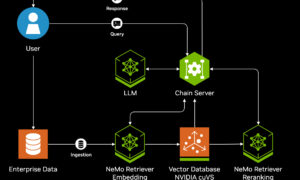Introduction:
In the rapidly evolving world of Search Engine Optimization (SEO), staying abreast of new technologies and strategies is crucial. Large Language Models (LLMs) have emerged as powerful tools that can significantly impact SEO practices. These models, such as OpenAI’s GPT-3.5, possess the ability to generate human-like text and offer valuable insights for content creation, keyword research, and search engine rankings.
This article aims to delve deeper into LLMs and provide SEOs with a comprehensive understanding of their significance and practical implications.
Understanding LLMs:
Large Language Models are advanced models trained on massive datasets to comprehend and generate natural language. They employ deep learning techniques and can produce coherent and contextually relevant responses based on the input provided.
LLMs have the potential to transform various aspects of SEO, offering assistance in content creation, keyword research, and understanding user intent. However, it is important to recognize that LLMs are tools that should be used in conjunction with human expertise and ethical considerations.
Content Creation:
LLMs have the capacity to revolutionize content creation by generating high-quality, readable text. SEOs can leverage LLMs to produce blog posts, articles, product descriptions, and other written content efficiently.
These models provide a valuable resource for inspiration and can expedite the content creation process. However, it is crucial to review and edit the generated content to ensure accuracy, relevance, and compliance with SEO best practices.
The human touch remains essential in maintaining the desired quality and aligning the generated content with the overall content strategy.
Keyword Research:
LLMs can greatly assist SEOs in conducting effective keyword research. By inputting a topic or seed keyword, LLMs can generate a list of relevant keywords, including long-tail variations, related terms, and emerging trends. This enables SEOs to identify valuable keywords and optimize content for improved search visibility.
LLMs can provide insights into user search intent, allowing SEOs to align their content creation efforts with the needs of their target audience. However, it is important to combine LLM-generated suggestions with traditional keyword research techniques and consider factors such as search volume, competition, and relevance.
Natural Language Processing:
The advanced natural language processing capabilities of LLMs align with the evolving search engine algorithms, which increasingly prioritize context and user intent. SEOs should focus on creating content that not only matches user intent but also provides comprehensive answers to search queries. LLMs can assist in analyzing and optimizing existing content for relevancy, comprehensiveness, and context.
By understanding the intricacies of language and user expectations, SEOs can enhance their content strategy, leading to improved search engine rankings and enhanced user experience.
SERP Features and Snippets:
LLMs can play a significant role in optimizing content for various SERP features, such as featured snippets, knowledge graphs, and answer boxes. By understanding the content formats that search engines typically display as snippets, SEOs can generate content that has a higher chance of being featured.
This increased visibility can result in higher click-through rates and improved organic traffic. However, it is crucial for SEOs to prioritize content quality and relevance. LLMs should be used as tools to aid in optimizing for SERP features, ensuring that the generated content effectively addresses user queries and provides value. Enhance your search visibility with SEO experts.
User Experience and Engagement:
While LLMs can assist in content creation, SEOs must not lose sight of the ultimate goal: providing a positive user experience and driving engagement. Search engines consider metrics like click-through rates, bounce rates, and time-on-page as indicators of content quality. Therefore, it is essential to focus on creating content that is valuable, engaging, and relevant to the target audience. LLM-generated content should undergo review and refinement to ensure it
Conclusion:
Large Language Models offer significant potential for SEOs, revolutionizing content creation, keyword research, and understanding user intent. They can expedite processes, provide valuable insights, and enhance search engine visibility. However, it is crucial to remember that LLMs are tools that should be used in conjunction with human expertise and ethical considerations. The human touch, review, and refinement remain essential to ensure content quality, relevance, and a positive user experience. By leveraging LLMs responsibly and ethically, SEOs can stay ahead in the ever-changing landscape of search engine optimization.



































